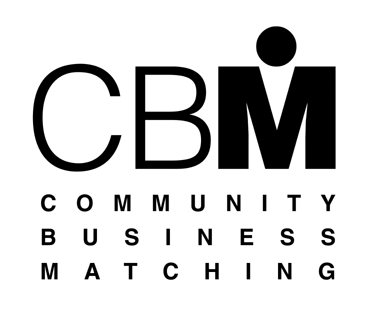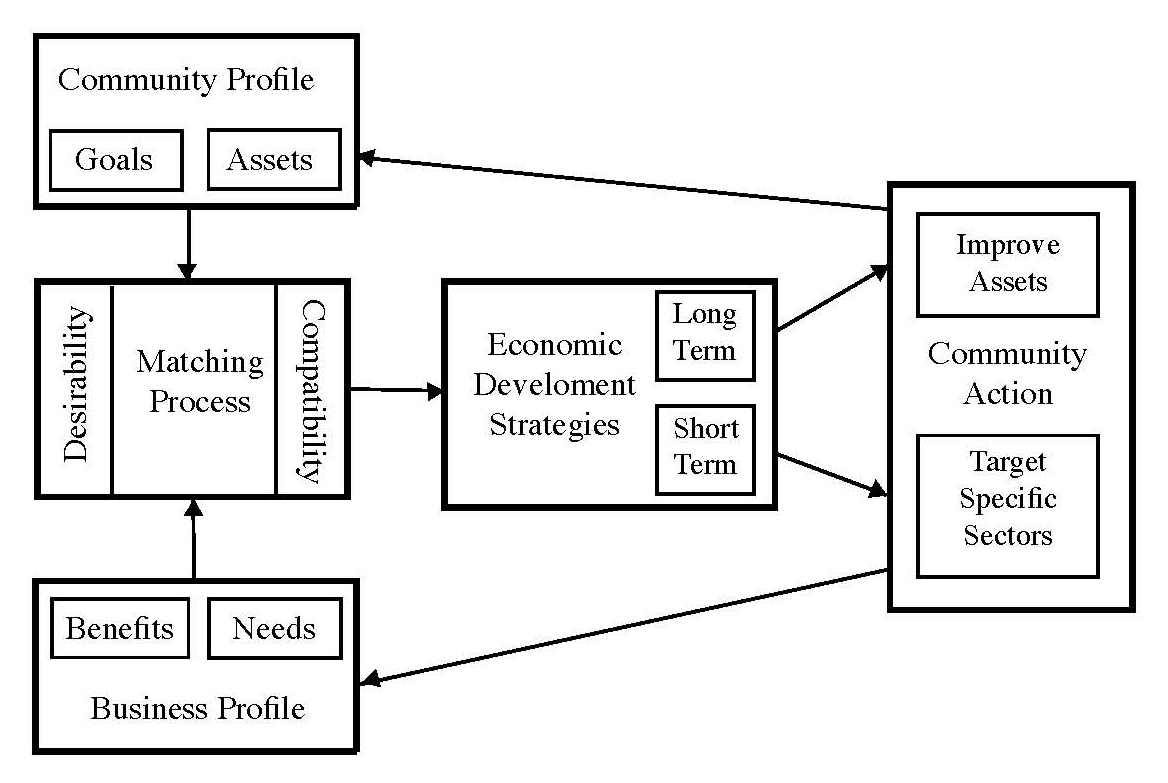
Community-Business Matching
The Community-Business Matching (CBM) Model Overview
The Community-Business Matching (CBM) Model can provide a framework that communities can use to prioritize their goals and identify the assets they have to help them achieve their goals. The CBM fits these goals and assets to business profiles in order to assist in among development decisions that reflect the desires of community members. Figure 1 provides an overview of the CBM framework.
Any group of people with a common interest in an economic development project or site can use CBM. It provides information for the community to make decisions about which types of industries to retain or attract. Specifically, CBM will provide:
- A framework for good decision-making, rather than “the answer” to development questions. The people in the community who know it best must make decisions about which development is preferred.
- Extensive information gathered from businesses throughout the United States about their site selection decisions and the benefits they bring to the communities where they are located. The names and addresses of specific businesses are not provided.
- Specialized software that can be use to access this data quickly and a variety of forms. Community member must carefully define their economic development goals and identify their assets or the results from the CBM will be useless.
CBM does not reduce the amount of effort required to conduct a successful development project. It does help improve the likelihood that a community will be satisfied with the results of a successful project. Community members must engage in a process to use CBM. Each group has a role with tasks to complete.
A Community must:
- Identify key contacts and representatives to participate in the project.
- Arrange meetings among community members and/or with the Community Economic Development Program
- Quantify community economic development goals
- Provide linkages to community members for data gathering
- Provide data on community assets
- Assist in the interpretation of model output.
- Determine appropriate development strategies from the results
A trained CBM facilitator will help input the community’s goals and assets into the CBM model. The business profiles are accessed by the model as the facilitator runs it and the facilitator will help the community interpret the output supplied by the model. Since the model was created with funds from the Cooperative Extension Service, the facilitator is likely to be a representative of the Cooperative Extension Service who is willing to assist the community through out the process.
This user’s guide provides a community with the information needed to complete the process of using the CBM model. The first section will help a community compile the information needed by the model. Then, specific technical information about how the model matches a community’s profile to various business profiles is described. The last section explains how a community might use the information generated by the model to take the next steps in community economic development.
Figure 1. CBM Model Overview
 For more information, contact Dr. Linda J. Cox. For more information, contact Dr. Linda J. Cox.
Back To Top
|

